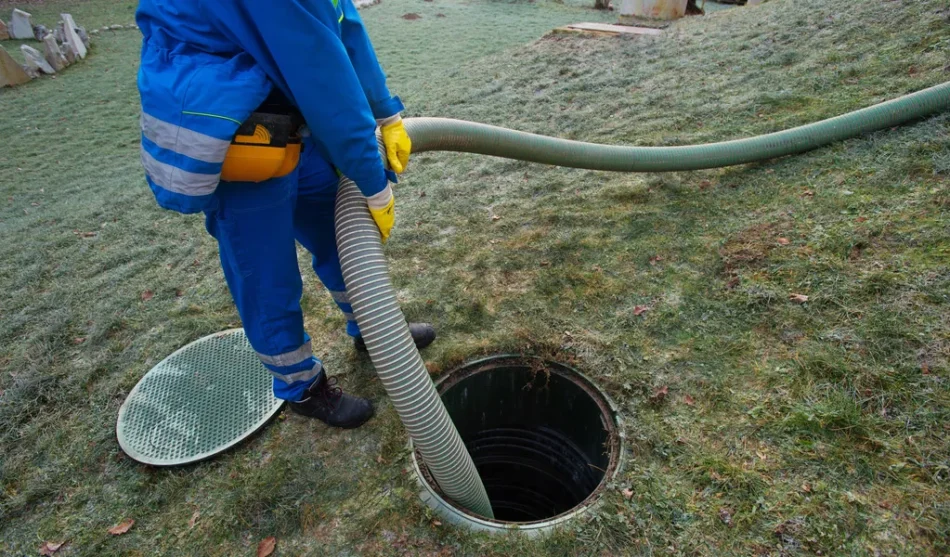Sustainable homeownership encompasses responsible practices that ensure the long-term health of your home, your wallet, and the environment. While we often associate sustainability with energy efficiency and eco-friendly materials, there’s another crucial aspect to consider: septic tank pumping. In this article, we’ll explore how septic tank pumping is a vital element of sustainable homeownership, preserving the environment, and protecting your investment.
Section 1: Sustainable Homeownership
Before diving into the importance of septic tank pumping, let’s understand what sustainable homeownership entails:
1.1 Environmentally Responsible Practices
Sustainable homeowners adopt practices that reduce their environmental impact. This includes conserving water, minimizing waste, and choosing eco-friendly products and technologies.
1.2 Long-Term Investment
Sustainability in homeownership involves making choices that enhance the longevity and value of your property. Sustainable homeowners prioritize maintenance and avoid costly repairs through preventive measures.
1.3 Financial Responsibility
Sustainable homeownership goes hand in hand with financial responsibility. Making wise decisions about maintenance, energy efficiency, and resource conservation can lead to significant long-term savings.
Section 2: The Role of a Septic System
A septic system is an integral part of many homes, responsible for wastewater management. It aligns perfectly with the principles of sustainable homeownership:
2.1 On-Site Wastewater Treatment
A septic system treats and disposes of wastewater on-site, eliminating the need for a connection to a municipal sewer system. This reduces the environmental impact associated with centralized wastewater treatment.
2.2 Groundwater Protection
A properly functioning septic system safeguards groundwater by treating wastewater effectively. Contaminated groundwater can have far-reaching environmental consequences, making groundwater protection a sustainability priority.
2.3 Cost-Efficient Solution
Septic systems are a cost-efficient wastewater treatment solution for homeowners. They require less maintenance and energy compared to municipal sewer systems, contributing to financial sustainability.
Section 3: The Significance of Septic Tank Pumping
Septic tank pumping is a fundamental aspect of septic system maintenance, and here’s why it’s essential in the context of sustainable homeownership:
3.1 Prevents System Overload
Over time, solids and scum accumulate in the septic tank. If these solids are not removed through pumping, they can reach a critical level, leading to system overload. Regular pumping prevents this overload, ensuring the tank functions as intended.
3.2 Avoids Drain Field Damage
Excessive solids entering the drain field can clog it, leading to damage and costly repairs. Pumping ensures that solids are removed from the septic tank before they have a chance to harm the drain field.
3.3 Maintains Efficient Waste Decomposition
Regular pumping removes excess solids from the septic tank, allowing the beneficial bacteria to break down organic matter efficiently. This ensures that the treatment process remains effective, promoting sustainable wastewater treatment.
3.4 Extends the System’s Lifespan
A septic tank that is regularly pumped and maintained can last for several decades. Neglecting pumping can lead to premature tank failure, necessitating a costly replacement. This is an example of financial sustainability in action.
Section 4: Sustainability and Pumping Frequency
The frequency of septic tank pumping depends on several factors:
- Tank Size: Larger tanks can hold more waste and may require less frequent pumping.
- Household Size: The number of occupants in your home affects wastewater production. Larger households may require more frequent pumping.
- Water Usage: High water usage, such as excessive laundry or frequent showers, can lead to more wastewater entering the tank, necessitating more frequent pumping.
- Waste Type: The type of waste you dispose of in your septic system can impact pumping frequency. Avoid flushing non-biodegradable items or harsh chemicals.
As a general guideline, experts recommend pumping your septic tank every 3 to 5 years. However, it’s crucial to consult with a professional septic service provider to determine the ideal pumping schedule for your specific system based on these factors.
Section 5: Signs That Your Septic Tank Needs Pumping
In addition to following a recommended pumping schedule, it’s important to recognize the signs that your septic tank may need pumping sooner:
5.1 Slow Drains
If you notice that sinks, showers, bathtubs, or toilets are draining more slowly than usual, it may indicate that your septic tank is reaching capacity.
5.2 Foul Odors
Unpleasant odors in and around your home can be a clear indicator of septic system issues. If you detect foul sewage odors, it’s a sign that gases and wastewater are not being properly contained or treated.
5.3 Sewage Backups
Sewage backups in your home are a severe problem that requires immediate attention. If wastewater backs up into sinks, bathtubs, or toilets, it’s time to schedule a septic tank pumping.
5.4 Lush Grass Over the Drain Field
An unusually lush and green patch of grass over your drain field can be a sign of septic system issues. It suggests that liquid wastewater is not being properly absorbed into the soil, indicating a potential problem with your septic tank.
5.5 Standing Water or Puddles
Standing water or puddles forming in your yard, particularly near the septic tank or drain field, can indicate a septic system problem. It suggests that the drain field is not effectively dispersing liquid wastewater.
Conclusion
Sustainable homeownership involves responsible choices that promote environmental health, financial stability, and long-term property value. A septic system, when properly maintained through regular septic tank pumping, aligns perfectly with these principles.
By adhering to a recommended pumping schedule and recognizing the signs that your septic tank may need pumping, homeowners can ensure the health and functionality of their septic systems for years to come. Remember that professional septic service providers have the expertise and equipment to perform septic tank pumping safely and effectively. Consulting with professionals for routine maintenance and pumping is the best way to protect your investment and enjoy a sustainable home environment. A sustainable home begins with a healthy septic system.








